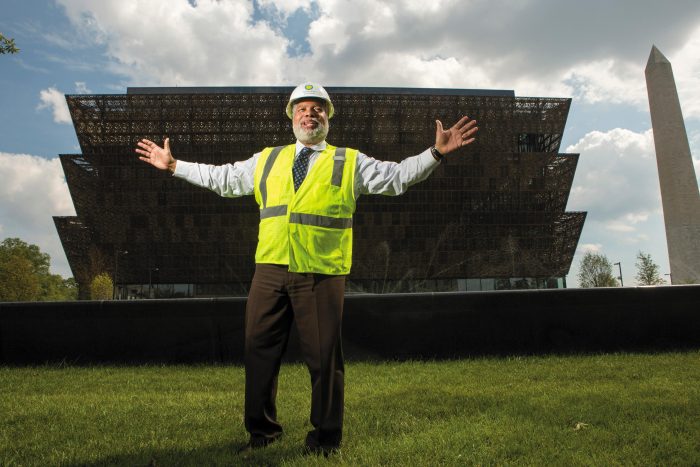
The new Smithsonian National Museum of African-American History and Culture opened formally to the public Sept. 24.
It was a day full of glitz and glamour as celebrities, elected officials, civil rights icons and three American presidents gathered to celebrate the historic moment.
The museum features over 30,000 artifacts from the journey of the African-American in America – such as the shawl Harriet Tubman was by Queen Elizabeth, Nat Turner’s Bible, Michael Jackson’s fedora, Whitney Houston’s dress, Emmitt Till’s casket and pieces from actual slave voyage ships.
It also includes 77-ton segregated vintage railway car from the 19th century, a prison guard watch tower from Louisiana State Penitentiary Angola, one of the largest maximum-security penitentiaries in America, and an original Tuskegee Airman airplane that was used in World War II.
Prior to the opening, Howard University News Service reporter Maiyah Mayhan talked with Lonnie Bunch, the museum’s founding director, about its development and significance.
Why is this museum important for the younger generation?
LONNIE BUNCH: This museum is important for all, but especially the younger generation, because the goal of the museum is to give people historical tools to understand the world they’re living in, to basically be motivated by struggle to make America better. One of the messages that you get in this museum is how young African Americans have died, sacrificed, marched, protested and changed American ways to the point where America could never go back to what it was.
What’s your vision for the future of the National Museum of African American History and Culture?
BUNCH: I want this museum to be in the future, not a community center, but the center of the community. I want it to allow people, both locally and around the country, to come see the issues we raise and wrestle with them. Race has always divided us. What we want to talk about is that we realize black lives matter is standing on shoulders, but it is standing on them in very different ways. So, we need to celebrate that as well. Part of what I’d like to do is make sure that this museum is part of the strategy to demand a freer and fairer America.
In the past, you’ve mentioned that Black history is American history. What are some of the responses you’ve received from that?
BUNCH: The goal was to say that while this is a story that gives an insider’s perspective to African-American culture is also a story that basically is a broader story. That in some ways that I’ve argued the African-American culture is almost too big to just be in the hands of one community that in essence it shapes us all and I want people to know that. And in some ways what I’m simply doing is marketing back to Carter G. Woodson and people in the 1920s who said African-Americans need to know their history beside it others.







